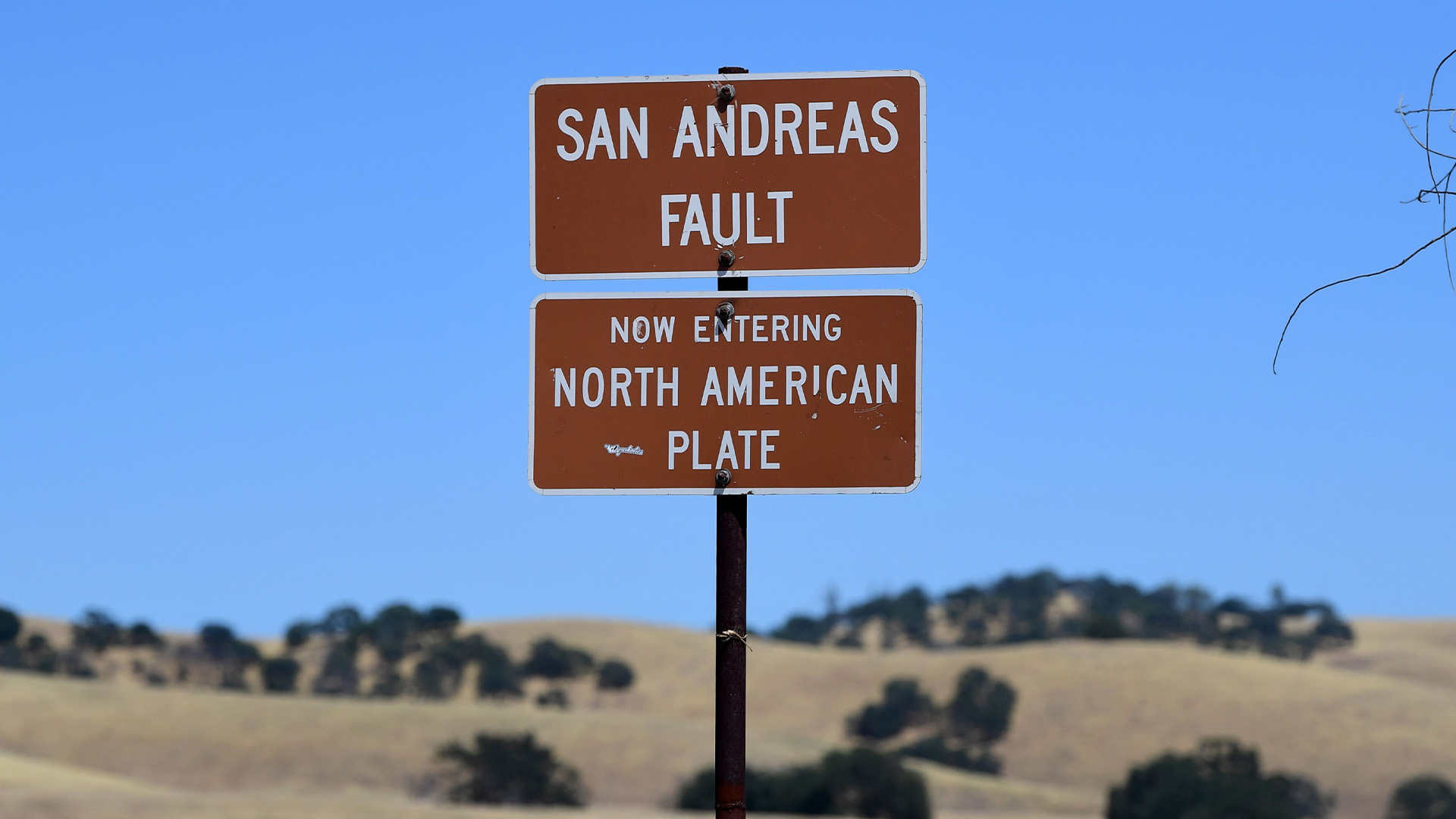Part of the San Andreas fault may be gearing up for an earthquake
The Parkfield section of the San Andreas fault is sending mixed messages before a time of expected increased seismic risk.

A section of the San Andreas fault where earthquakes occur regularly may give off a distinct signal before it trembles to life, new research finds. The signal hints at the opening and closing of cracks beneath the subsurface.
This section of faultline, known as Parkfield in Central California, shakes regularly about every 22 years. It last ruptured in 2004, so another earthquake may be imminent. However, the signal is not currently occurring at the fault segment, and the section isn't behaving exactly like it did the last time it ruptured, according to a study published March 22 in the journal Frontiers in Earth Science.
The differences might mean the next quake won't happen right away, or they might mean that the epicenter of the quake will be different from 2004's epicenter, which was just southeast of the tiny town of Parkfield. There will be no way to know until the next quake actually happens, said study lead author Luca Malagnini, the director of research at the National Institute of Geophysics and Volcanology in Italy.
"We are waiting," Malagnini told Live Science.
Related: Balanced boulders on San Andreas fault suggest the 'Big One' won't be as destructive as once thought
The San Andreas fault marks the boundary between the Pacific and North American tectonic plates. South of Parkfield, the fault is locked, meaning the two plates do not move against one another. North of Parkfield, the San Andreas fault moves freely, with the plates creeping against one another at a constant rate of 1.4 inches (3.6 centimeters) a year. Parkfield is a transitional zone between these two regimes. When this region of the fault rumbles to life, it gives off a quake of around magnitude 6. Because of the remote location, these quakes rarely threaten human life or property, though quakes on one fault can affect stresses on other nearby faults, Malagnini said.
But researchers watch Parkfield closely in hopes of finding activity that will help them predict when the next quake will occur. Being able to detect reliable precursors to earthquakes — strain on rocks for example, or changes in permeability under the surface — would help scientists warn people about imminent temblors, potentially saving lives. Parkfield, with its recurring quakes, might be a good place to look for these clues to extrapolate to more dangerous fault segments. But so far, that goal has been elusive.
Get the world’s most fascinating discoveries delivered straight to your inbox.
In the new research, Malagnini and his colleagues measured seismic wave attenuation, or how sound waves lose energy as they move through Earth's crust. Attenuation is related to the permeability of rock, Malagnini said. In the period of stress before an earthquake, cracks open and close in the strained rock around the fault. The new study found that before the 2004 earthquake at Parkfield, the attenuation of low-frequency waves rose in the six weeks prior to the quake, while the attenuation of high-frequency waves fell.
This, Malagnini said, is the result of strain on the rocks as the Pacific plate in the west moves against the North American plate to the east. As the stress builds, long cracks ranging in size from several hundred feet to 1 mile (1.5 kilometers) long open up in the subsurface. These long cracks take up some of the strain on the surrounding rocks, so shorter cracks in the rock close up. This decline in short cracks and increase in long cracks explains the bifurcation in the energy loss of different seismic waves, Malagnini said.
Right now, there are hints that Parkfield is entering the final phase of its quiet period, Malagnini said. The timing is right, for one thing: Parkfield has "skipped" quakes before, but those missed quakes in the 22-year cycle occurred when nearby, unrelated earthquakes changed the stresses in the region. There have been no such quakes this time. Another possible hint is that the variation in the attenuation measurements has dropped very low since 2021. A similar drop in this measurement occurred in 2003 before the 2004 Parkfield quake.
However, Malagnini said, there is not yet any evidence of the bifurcation of the attenuation measurement that preceded the 2004 quake. He suspects the next quake will hit at Parkfield this year, he said, but the epicenter may not be in the same place as it was in 2004, meaning these measurements will look different.
Malagnini won't be attempting to forecast the next quake down to the day, but he hopes that after it happens, he and his team can tease out signals to look for in the future.
"I'll be waiting for the next earthquake," Malagnini said. "And then we'll look back."

Stephanie Pappas is a contributing writer for Live Science, covering topics ranging from geoscience to archaeology to the human brain and behavior. She was previously a senior writer for Live Science but is now a freelancer based in Denver, Colorado, and regularly contributes to Scientific American and The Monitor, the monthly magazine of the American Psychological Association. Stephanie received a bachelor's degree in psychology from the University of South Carolina and a graduate certificate in science communication from the University of California, Santa Cruz.
 Live Science Plus
Live Science Plus





